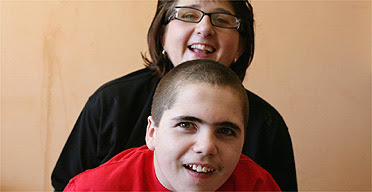Scuba dive down to your hotel’s lobby; spend a luxurious night in a palace made of ice; have the concierge find you an astronomer for an evening of stargazing. All are part of the expanding universe of science and exploration travel. Restaurants and bars are in on this trend too, with chefs using the laws of chemistry to whip up great meals and engineering students getting drunk on Ein-Stein beer. We’ve turned up some places well worth a visit. So take a look. Near or far, chances are our paths will cross, and when they do, we’ll grab a drink to toast—what else?—science.
Icehotel
Village Jukkasjärvi, Sweden
If your idea of comfort is to bundle up in thermal underwear and jump into a sleeping bag, then book a stay at this igloo hotel, which is kept at –5 degrees Celsius (23 degrees Fahrenheit). Don’t worry, though; you won’t freeze. When you check in you receive a full set of winter clothes. And anyway, every bit of chilliness is worth it: The entire hotel—including the reception desk, chandeliers, chairs, sculptures, and rooms—is made of ice. Built from scratch each year, the resort requires 30,000 cubic meters (40,000 cubic yards) of snow and 2,000 tons of ice from the nearby, frozen Torne River. During the day, be sure to pull yourself away from dogsledding for a field trip to the Esrange Space Centre, where scientists study the northern lights. Later, look into the night sky and see the lights yourself, then end the evening with a drink in the hotel’s Absolut Icebar. The next morning, spend a quiet moment in the spectacular Ice Church.
www.icehotel.com
Astronomers Inn
Benson, Arizona
Is the cosmos your thing? Stay next door to Vega-Bray Observatory’s headquarters in the comfort of a hilltop bed-and-breakfast. Bring your telescope, set up on the patio, and hire an astronomer, if you like, for a guided journey into the night. Or go inside and use the observatory’s equipment. You can even buy time on the 20-inch f/10 Maksutov in the dome. Book a room that suits your mood—choices include the romantic Garden Room, the Egyptian Room, and the Galaxy Room with its Star Wars decor. There’s more to this place than sleeping and stargazing. After breakfast you can rummage through collections of dinosaur bones, go bird-watching, or hike in the hills. If you can’t wait until night to use a telescope, the hotel offers one that lets you safely view the sun.
www.astronomersinn.com
Jules Undersea Lodge
Key Largo, Florida
To reach the lobby of this small underwater hotel, you have to scuba dive 21 feet straight down. If you don’t know how, an instructor will teach you; then suddenly you’re in mangrove heaven. Formerly a research lab, this lodge is now available to anyone wanting to live out their underwater fantasy. The sea-bottom resort has two cozy bedrooms resembling cruise-ship cabins. If you feel claustrophobic, just look out of the 42-inch windows to watch the fish swim by. For those certified at scuba, the hotel offers unlimited diving. If it’s luxury you need, wait until the 2009 opening of the Hydropolis, a hotel 66 feet under the Persian Gulf off the coast of Dubai. It will feature plusher cabins, along with a marine biology lab. By the time you check out, you’ll feel like Jacques Cousteau.
www.jul.com
El Bulli
Costa Brava, Spain
Restaurant magazine calls this science-based restaurant the best in the world. But it’s open only six months each year, because chef Ferran Adrià Acosta spends the other half year traveling to research his innovative cuisine. Once home, he tests his concoctions in a Barcelona laboratory, because his vaunted epicurean magic is really no magic at all—it’s all science. He employs molecular gastronomy to play with temperature, texture, and taste. Without a doubt this renowned chef, who has written extensively about the philosophy of food and published a series of cookbooks, is challenging our concept of taste. El Bulli’s menu features dishes such as salty ice cream, liquid olive, and a pistachio truffle cooled with liquid nitrogen.
www.elbulli.com
uWink
Woodland Hills, California
Inside a Los Angeles mall, Nolan Bushnell, who founded Atari and Chuck E. Cheese, has opened the first “Chuck E. Cheese for adults”—and a prime dating spot for geeks. UWink revolutionizes the way we play and eat by bringing technology to the table. Each table has a computer with a touch screen on which you order your food, picking and choosing ingredients as you go. The computer is more than a menu; it’s called “iCandy” for diners, offering screen games you’ve probably played in bars when the conversation ran dry. Here, the games are interactive; you can even play against people at other tables. If you’re lucky, maybe you’ll get noticed by the real eye candy across the room.
www.uwink.com
Kannapolis, North Carolina
Named for the number of chromosomes in the human body, this restaurant carries the science theme to an extreme: Wall art includes chemical symbols for the likes of chocolate and caffeine, and lab beakers serve as vases. It’s no surprise that this upscale restaurant, located across from the North Carolina Research Campus, attracts scientists from the surrounding universities. Buy your date a Blinded Me With Science cocktail, and try the Peach-tri Dish Martini for yourself. And take note: The girls’ room is marked XX and the guys’ is XY.
 Image courtesy of Joshua Ellington/Croft Institute
Image courtesy of Joshua Ellington/Croft Institute The Croft Institute
Melbourne, Australia
You may have to hold your nose to get here, if you find it at all. The bar is hidden in an alleyway that’s often littered with trash. Inside, this three-story hangout looks more like a laboratory than a pub, since it sports one of Melbourne’s largest private collections of equipment, including beakers, Bunsen burners, industrial sinks, and reaction vessels. The second floor resembles a hospital waiting room, complete with bathrooms labeled “The Departments of Male and Female Hygiene.” Tip for weary women: Take a rest on the hospital bed inside the Dept. of Female Hygiene.
www.thecroftinstitute.com.au
Miracle of Science Bar & Grill
Boston, Massachusetts
It’s as if you’ve walked into a small chemistry lab: The bar and tables are topped with lab-style fireslate, and patrons sit on uncomfortable stools surrounded by old microscopes, scientific equipment, and pictures of Albert Einstein. The best chemistry is on the menu, though, written as a periodic table on a chalkboard: It’s Cb for cheeseburger and Vb for veggie burger, and the prices are written where the atomic weights should be. Regulars include Nobel Prize winners, whose star power outshines that of Paris Hilton at her nightclub-hopping best. Be sure to try the UFO beer.
Toronto, Ontario, Canada
There are two mottoes here: “Don’t drink and derive” and “Where great minds drink alike.” Just across from the University of Toronto, the Ein-Stein Café is the best place to enjoy an Ein-Stein lager and pick up engineers. Sometimes when the patrons have had a little too much, they write equations on the walls. For the mathematically talented, there’s a chance to win a free platter of wings and beer—all you have to do is map out the equation of special relativity.
www.ein-stein.ca
Original here














 In Sony's new
In Sony's new 


